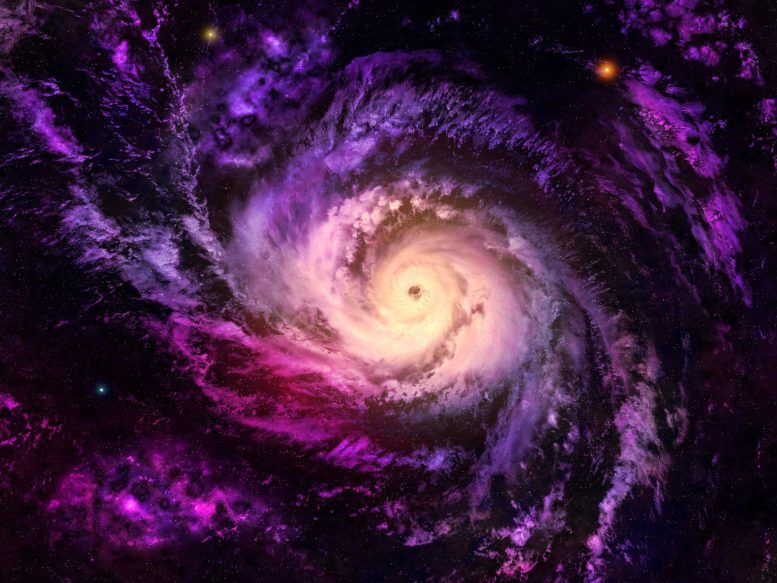
The data also reveals something which has been hinted at before, which is that the first stars and galaxies could have had a measurable contribution to the background radiation that appeared as a result of the Big Bang and which has been traveling toward us ever since.
Researchers have been able to make some key determinations about the first galaxies to exist in one of the first astrophysical studies of the cosmic dawn, the period in the early Universe when the first stars and galaxies formed.
Using data from India’s SARAS3 radio telescope, the team led by the University of Cambridge was able to look at the very early Universe, just 200 million years after the Big Bang, and place limits on the mass and energy output of the first stars and galaxies.
Counterintuitively, the researchers were able to place these limits on the earliest galaxies by not finding the signal they had been looking for, known as the 21-centimeter hydrogen line.
This non-detection allowed the researchers to make other determinations about the cosmic dawn, placing restraints on the first galaxies, enabling them to rule out scenarios including galaxies that were inefficient heaters of cosmic gas and efficient producers of radio emissions.
While we cannot yet directly observe these early galaxies, the results, reported in the journal Nature Astronomy, represent an important step in understanding how our Universe transitioned from mostly empty to one full of stars.
Understanding the early Universe, when the first stars and galaxies formed, is one of the major goals of new observatories. The results obtained using the SARAS3 data are a proof-of-concept study that paves the way to understanding this period in the development of the Universe.
The SKA project – involving two next-generation telescopes due to be completed by the end of the decade – will likely be able to make images of the early Universe, but for current telescopes, the challenge is to detect the cosmological signal of the first stars re-radiated by thick hydrogen clouds.
This signal is known as the 21-centimeter line – a radio signal produced by hydrogen atoms in the early Universe. Unlike the recently launched JWST, which will be able to directly image individual galaxies in the early Universe, studies of the 21-centimeter line, made with radio telescopes such as the Cambridge-led REACH (Radio Experiment for the Analysis of Cosmic Hydrogen), can tell us about entire populations of even earlier galaxies. The first results are expected from REACH early in 2023.
To detect the 21-centimeter line, astronomers look for a radio signal produced by hydrogen atoms in the early Universe, affected by light from the first stars and the radiation behind the hydrogen fog. Earlier this year, the same researchers developed a method that they say will allow them to see through the fog of the early universe and detect light from the first stars. Some of these techniques have been already put into practice in the current study.
In 2018, another research group operating the EDGES experiment published a result that hinted at a possible detection of this earliest light. The reported signal was unusually strong compared to what is expected in the simplest astrophysical picture of the early Universe. Recently, the SARAS3 data disputed this detection: the EDGES result is still awaiting confirmation from independent observations.
In a re-analysis of the SARAS3 data, the Cambridge-led team tested a variety of astrophysical scenarios which could potentially explain the EDGES result, but they did not find a corresponding signal. Instead, the team was able to place some limits on the properties of the first stars and galaxies.
The results of the SARAS3 analysis are the first time that radio observations of the averaged 21-centimeter line have been able to provide an insight into the properties of the first galaxies in the form of limits of their main physical properties.
Working with collaborators in India, Australia, and Israel, the Cambridge team used data from the SARAS3 experiment to look for signals from cosmic dawn, when the first galaxies formed. Using statistical modeling techniques, the researchers were not able to find a signal in the SARAS3 data.
“We were looking for a signal with a certain amplitude,” said Harry Bevins, a Ph.D. student from Cambridge’s Cavendish Laboratory and the paper’s lead author. “But by not finding that signal, we can put a limit on its depth. That, in turn, begins to inform us about how bright the first galaxies were.”
“Our analysis showed that the hydrogen signal can inform us about the population of first stars and galaxies,” said co-lead author Dr. Anastasia Fialkov from Cambridge’s Institute of Astronomy. “Our analysis places limits on some of the key properties of the first sources of light including the masses of the earliest galaxies and the efficiency with which these galaxies can form stars. We also address the question of how efficiently these sources emit X-ray, radio, and ultraviolet radiation.”
“This is an early step for us in what we hope will be a decade of discoveries about how the Universe transitioned from darkness and emptiness to the complex realm of stars, galaxies, and other celestial objects we can see from Earth today,” said Dr. Eloy de Lera Acedo from Cambridge’s Cavendish Laboratory, who co-led the research.
The observational study, the first of its kind in many respects, excludes scenarios in which the earliest galaxies were both more than a thousand times as bright as present galaxies in their radio-band emission and were poor heaters of hydrogen gas.
“Our data also reveals something which has been hinted at before, which is that the first stars and galaxies could have had a measurable contribution to the background radiation that appeared as a result of the Big Bang and which has been traveling towards us ever since,” said de Lera Acedo, “We are also establishing a limit to that contribution.”
“It’s amazing to be able to look so far back in time – to just 200 million years after the Big Bang- and be able to learn about the early Universe,” said Bevins.
Reference: “Astrophysical constraints from the SARAS 3 non-detection of the cosmic dawn sky-averaged 21-cm signal” by H. T. J. Bevins, A. Fialkov, E. de Lera Acedo, W. J. Handley, S. Singh, R. Subrahmanyan and R. Barkana, 28 November 2022, Nature Astronomy.
DOI: 10.1038/s41550-022-01825-6
The study was funded in part by the Science and Technology Facilities Council (STFC), part of UK Research & Innovation (UKRI), and the Royal Society. The Cambridge authors are all members of the Kavli Institute for Cosmology in Cambridge.

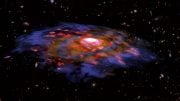
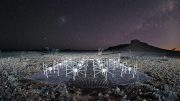

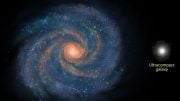
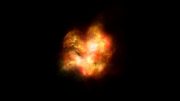
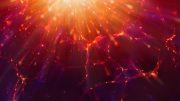
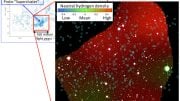
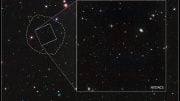
After learning about competing theories to the big bang/standard model it seems almost silly to not always comment on what about the unexpectedness of certain findings supports things like variable mass.
Quasar groups 2 big. Galaxies 2 complicated 2 early. Everything red except sometimes.
I’m not sure what you intend to say, but if it is that LCDM cosmology is problematized by these observations you are wrong. The paper observations support it such as the CMB observations are not significantly touched and the early galaxy emissions fit the LCDM history.
Rubbish, the big bang is long falsified, it’s just stubbornness that some still accept a predictive success of 4.6% of the observable universe as acceptable. There was no big bang, other cosmological models account easily for 100% of the observable universe
https://dwahts.blogspot.com/2021/05/climate-science-overtakes-cosmology.html?m=1
Confirmig timing ĺimit fixed for Cosimic Dawn from data of SARAS3 experiment,starting as fròm 200 million years after the big bang; where radio-band emission is thousand times brighter than present but poor heater of hydrogen gas to reionise them
to make transparent.
Thus,according to the Octet Rule of the evolution of galaxy,that is,when first 1 billion years is
divided in to 8 equal parts gives 125 million years for one unit,then earliest first galaxy came in to existance at the end of first unit,that is,125 + or _ 25 million yesrs after the big bang and Cosmic Dawn occured at the end of second unit,that is,250 + or _ 2×25 million years after the big bang.SSRAS3 experiment due to strong capability of observation fixed right limit for time period of Cosmic Dawn.Thanks to the author and congratulations to the astrophysicsts carried out SARAS3 experiment to obtain valuable data for text.
There is a youtube version of (https://youtu.be/z7DtyPgPAwg) which is actually a audio version with unrelated images like covid-19, Taiji exrrcise training,… odd.
I am stunned every time I see these articles and see no mention of how differentials in charge that MUST exist between suffering masses of ionized hydrogen and how that charge would affect it even control galaxy formation and behavior.
These attempts to ignore Electrodynamics effects and cling to 100-year-old theories that require ever more outlandish explanations to make them seem still applicable are nothing short of cringe-worthy. ‘Hydrogen “heated by early light” to ionization potentials’ my arse. What caused the photonic emissions, then? Combining cause and effect here.
Gravity moved charged masses close enough to interact and so they did in the very predictable way that differential charges do-they try and equalize through the double-layer between them. Current is induced. Concurrent magnetic fields form from them. Gravity takes a back seat until charges equalize.
Electrodynamics principles must be applied to ionized masses unless some brute kinetic force comes along to change the system! And even then the kinetic force needs to be substantial enough to overcome the electromagnetic forces currently at work!
Why is this SO difficult for’Modern Astronomy’ to come to terms with?? o.O
I’m not sure what you intend to say, but if it is that LCDM cosmology is problematized by these observations you are wrong. The paper observations support it such as the CMB observations are not significantly touched and the early galaxy emissions fit the LCDM history.
You seem to suggest an alternative competing theory, but there isn’t any such left in modern cosmology – see for instance Wikipedia under the entry “Big Bang” – and you present no quantitative results that say otherwise.
Walt already done showed all you have to do is look at the magnety lines and the double helix the. Electric. Universal tell,’s it all
Even not being a scientist,I can wholeheartedly say,THIS IS A BUNCH OF JUNK
I doubt you can say that without actually saying something on the science. 😎
“That which can be asserted without evidence, can be dismissed without evidence.” – Christopher Hitchens
For the LCDM cosmology the observations are so far intrusive enough at the observed portion of the CMB signal but insignificant for the models: “The data disfavour … and, separately, a synchrotron radio background in excess of the CMB by ⩾ 6% at 1.42 GHz” while the posterior excess “exhibit flat distributions and little constraint on the parameter space of the CMB-only models”. But it appears it is already informative on early galaxy populations.
Though it is a first result, if it stand up against the previous EDGES result, so early 2023 REACH results will be exciting!
Here we go again.